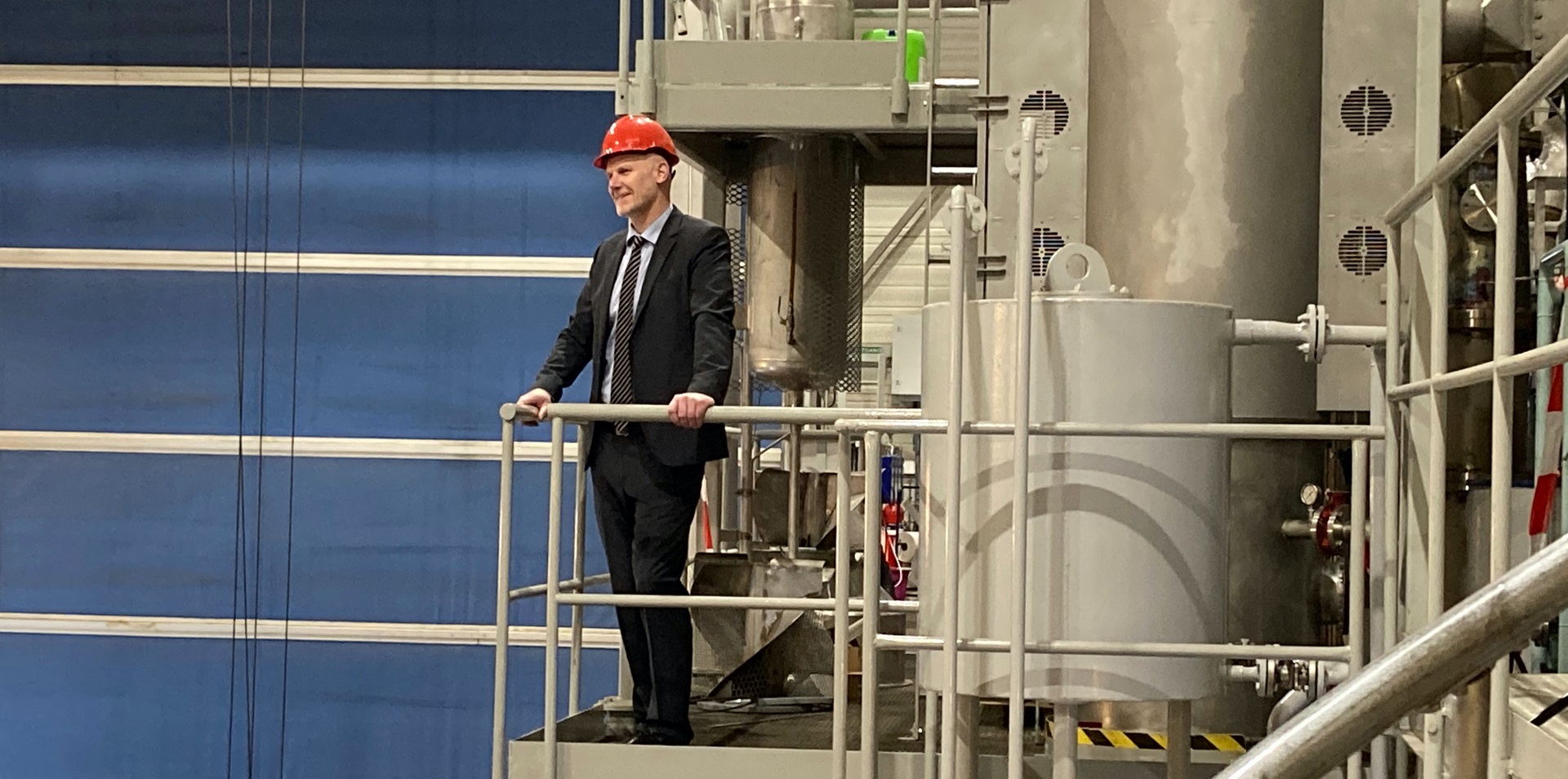

Article originally published by The Motorship on June 3, 2021.
Exhaust gas cleaning technology is still proving its worth in the market as further developments of the technology bring new flexibility for further environmental adaptations in the future. Wärtsilä Exhaust Treatment director Sigurd Jenssen explains how forward-looking exhaust gas abatement technology is a key route for the global shipping industry to meet our sustainability challenges
Almost as long as scrubber technology has been commercially available for shipping, questions have been raised about the potential longevity of the technology. The potential for extending the scope of scrubber technology beyond reducing SOx emissions from high sulphur fuel oil was not a commercially viable research area for a mono-fuel world. However, scrubber manufacturers are now starting to look at how the technology can evolve over time as demands for a wider range of emissions reductions technologies builds.
Manufacturers of scrubbers do not anticipate that demand for these systems will ebb, but expect that these systems will also play a part in cutting emissions in the future as well. This confidence is supported by a current order book, with manufacturers reporting that shipyards are continuing to build vessels with scrubber technology onboard.
Wärtsilä sees a pipeline of such orders continuing into the future, Sigurd Jenssen, Director, Wärtsilä highlights.
We have seen continued healthy interest in orders for scrubbers, especially on the newbuild side. Newbuilds have been the mainstay of our exhaust gas abatement technology order book, with owners opting for a mixture of open-loop and hybrid types
- Sigurd Jenssen
Jenssen also notes that a lot of the commercial sector of shipping such as containerships, tankers and bulker owners are now opting for scrubbers when ordering newbuilds. From this, Jenssen expects to see growth for scrubbers for this year and beyond in both the newbuild and retrofit market.
This was supported by BIMCO's Chief Shipping Analyst, Peter Sand, who reported that installations of scrubber systems had reached 228 ships in the first quarter of 2021. Sand also noted that the proportion of newbuilds compared with retrofits had risen since 2020, with newbuilds accounting for around two-thirds of installations in Q1 2021.
Jenssen noted that Wärtsilä had its best ever year in 2020 for scrubber deliveries, despite the COVID-19 pandemic. He highlighted that shipowners continued to express an interest in exhaust gas abatement systems as long-term solutions for the global fleet. Some shipyards are also keeping faith with scrubber-equipped designs, as they modernise series designs to meet EEDI Phase 3 standards.
Jenssen notes that a significant order was booked in November 2020 with a Japanese shipyard, Japan Marine United (JMU), to install a 25MW scrubber on a new Japanese-owned Very Large Crude Carrier (VLCC) set to be delivered in 2022.
The system for the newbuild VLCC will run in an open-loop configuration with the vessel. The company noted that it shows that scrubbers are a full lifecycle asset going forward. Wärtsilä’s scrubbers take a modular approach and can be upgraded over time, with the potential to incorporate technology to mitigate Nitrogen oxide (NOx) and Particulate Matter (PM) emissions.
Wärtsilä also notes that it is working on other development for its technology to trap particulate matter as a modular add-on for its scrubbers, and are also exploring how it can enable NOx emission reductions. “The capacity to reduce PM and NOx further provides ship owners and operators with assurances that they are future-proofed against any future more stringent emission reduction targets,” Jenssen adds.
Future fuels are also playing their part in the market as the use of LNG along with a scrubber is being touted as a method that shipowners can use to cut their vessels' emissions. While common sense would seem to indicate that the development of clean fuels may render scrubber technology redundant, broadening emissions reductions targets and a growing understanding of the emissions challenges posed by new fuels suggests that the technology may have a long term future.
Jenssen struck a bullish note, adding that: “The question of future fuels is so far into the medium and long-term – and not to mention the huge development in infrastructure and vessel equipment needed to handle those fuels – that we see a little impact at the moment.”
Jenssen also noted that price differentials in the fuel market were also supportive for the scrubber market, adding
The economics of exhaust gas abatement technology becomes increasingly favorable as the fuel price spread between HSFO and LSFO widens, so the scrubber case becomes a good investment
- Sigurd Jenssen
Future proofing scrubbers
Although the future of scrubbers is still not clear, manufacturers are taking steps to make sure that this technology still has a place in the industry in the coming years.
Sigurd Jenssen, Director, Wartsila explains how the company sees the developments for this technology for the future.
It is increasingly understood that exhaust gas treatment systems, beyond just backing sulphur, can provide the shipping industry with an innovation springboard to tackle pollutants into the future, including NOx, PM and Greenhouse Gases
- Sigurd Jenssen
It will be about moving these technologies beyond just servicing the sulphur challenge which will require investment and research, but the long term goal would be to tailor the technology to meet other specific challenges that are coming in the future. “We believe that this forward-looking innovation is a key route for shipping to meet its sustainability challenges,” he added.
Jenssen also adds that: “If we can create an ecosystem of modular technologies around the stack to tackle pollutants, we will be playing our part. A mix of carbon capture and storage, clean and environmental technologies and new low carbon fuels will be needed to tackle the challenges of the future.”
